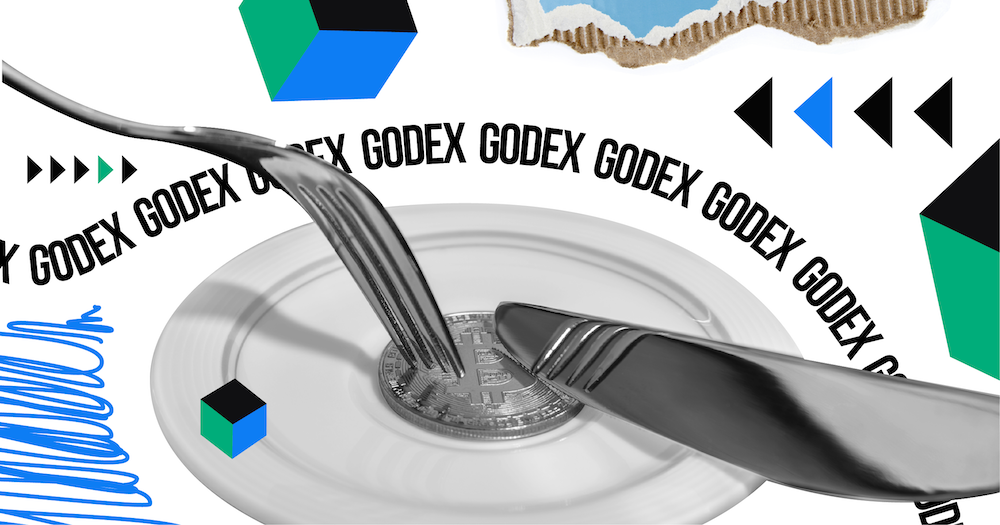Table of Contents
Are you interested in the upcoming crypto forks? Before chasing after any of them, make sure it has an active community, stable wallet, and value. Often, forked coins turn out to be quick cash grabs, flops, jokes, and even scams. So, do your research, and we’re here to guide you as well.
What Is a Crypto Fork?
Apps in your mobile, laptop, or PC need updates to function better. Often, they are crucial, and, if not installed, the apps cannot work properly. The same principle works in the blockchain domain.
Cryptocurrency forks occur when blockchains require some software updates or even essential changes to the protocol of cryptos. Forks can be planned and not. Planned ones are usually those that the developers were anticipating to release. They would announce an upcoming fork, present a fork calendar, or include this date to the roadmap.
Unplanned forks come out against expectation when miners find the same block at the same time. Thus, the blockchain halves without actually affecting the coin’s worth. The mining process keeps on going, and blocks join new branches of the chain. The branch with the majority of mined blocks survives, while another with the least amount of blocks does not.
The Bitcoin forks list can count such forks as BitcoinXT and Bitcoin Classic, Bitcoin Cash and Bitcoin Gold (we’ll dwell on BTC forks further below). For instance, let’s find out what soft forks and hard forks are, as it’s pivotal to know the difference.
Hard Fork and Soft Fork
Miners play an essential role in any decentralized network. They find new blocks, approve transactions, and cultivate a favorable environment within a blockchain. To generate the next block and get it included to the blockchain, miners need to agree upon it.
Moreover, any significant protocol or update needs to be validated by the majority of miners. Once updates are made, a blockchain starts operating in a new way according to recent changes. Everyone involved should follow a new protocol as well. It is a crypto hard fork.
Upcoming crypto forks might be soft. Soft ones also bring updates to blockchain’s software, but these are backward compatible shifts. Nodes that do not accept new rules can still generate blocks and be sound participants of the network.
Ethereum and Bitcoin Hard Forks
New blockchain can come up as a result of hard forks as it was with Bitcoin and Ethereum. For a deeper comprehension of a hard fork, let’s look at some key changes that emerged within Ethereum and Bitcoin networks.
Ethereum Hard Forks
Ethereum is the most popular amongst cryptocurrency forks. Back in 2016, there was a scandalous ETH-based decentralized autonomous organization when a bad actor stole over $50 million of funds. To tackle such critical issues, developers offered a few solutions. These were implementing a soft fork and further system’s rollback, creating hard forks, and reset smart contracts.
The developers opted for the second solution, and the original Ethereum chain was divided into two different ones. The first one – Ethereum Classic – kept on following the old rules and generating blocks on the old chain. The new blockchain ETH originated from the mainchain on the block number 1,920,000. At present, ETH is the second-largest cryptocurrency by market capitalization.
Bitcoin Hard Forks
Bitcoin is the oldest and most significant cryptocurrency in the industry. Of course, it had a lot of both hard and soft forks. The list of Bitcoin forks starts with Bitcoin XT and Bitcoin Cash. A curious fact is that a soft fork SegWit caused the generation of a hard fork BCH.
The Bitcoin forks list is way longer, but those were rather tiny improvements than independent, effective cryptos. In fact, there are five other main Bitcoin hard forks, except BTC XT and BTC Cash. These are Bitcoin Unlimited, Bitcoin Classic, Bitcoin Gold, Bitcoin SV, B2X. So, when is the next bitcoin fork? The main challenge of Bitcoin now is to solve the anonymity issue. Thus, the next one comes as far as the solution comes up.
How to Get Forked Coins
If you’re interested in obtaining upcoming crypto forks, make sure you’ll have a BTC wallet that supports the forks. Or, you can use an exchange with a solid forks supporting record. A good one should offer futures on or about the snapshot date for each, and BTC futures should be tradable right after the fork comes out.
However, the most recommended method here is controlling your private keys when the forks show up. In this case, you’ll need to download the official wallet of a new coin and then set up the wallet to claim upcoming cryptocurrency forks.
It’s a safe practice to wait until someone else claims a forked coin or some major wallet or exchange confirms that the coin is live and reliable. There are people out there who will create fake wallets, guidelines, and scam buying opportunities.
Cryptocurrency Forks List
The Bitcoin forks list has grown from late 2017 to 2018 as about 20 Bitcoin forks occurred. Each fork comes with a block number or block height. To claim the fork, one needs to be in Bitcoin before the block number for the fork shows up. The list comprises the releases up to 2020. Herewith, pay attention that in order to avoid any misleading, you should find an appropriate link, use a block explorer for the present-day block height, and check if the coin is trading. Take a look:
- BitcoinX
- ABitcoin (ABTC)
- Supper Bitcoin
- Bitcoin Platinum
- Bitcoin Oil
- Bitcoin World
- Bitcoin Stake
- Bitcoin Faith
- Lightning Bitcoin
- Bitcoin Cash Plus
- Bitcoin Silver
- Bitcoin Uranium
- Bitcoin Top
- Bitcoin Pizza
- Bitcoin File
- Bitcoin God
- BitEthereum
- Bitcoin Segwit2x “2.0”
- Bitcoin Smart
- Bitcoin Ore
- Bitvote
- Bitcoin Interest
- Bitcoin Rhodium
- Bitcoin Atom
- Bitcoin Private
- Bitcoin Hush
- Quantum Bitcoin
- Bitcoin LITE
- Bitcoin 2
- BitcoinClean
- Bitcoin Lunar
- Bitcoin Prime
- Anonymous Bitcoin
- Bitcoin SV
- Smart BTC
- Fox BTC
- Bitcoin Reference Line
- MicroBitcoin
- BItcoin Class
- Bitcoin Dao
- Bitcoin RM
- Bitcoin Air
- Bitcoin Post-Quantum
- Bithereum
- Bitcoin Stash
- Bitcoin Core
- Bitcoin Dollar
- Bitcoin Metal
- Hex
- Bitcoin All
- BitcoinCash Zero
- BTC Cash
- ZenCash
FAQ
When is the next Bitcoin fork?
Well, this year has brought a BTC Cash hard fork, yet there’s more to come. Among upcoming crypto forks, the last expected official hard fork was ZenCash. It’s a part of the Horizen Ecosystem. It was supposed to welcome the main-net hard fork on November 25, 2020. The block number was 835,968.
What is Crypto forking?
In simple words, crypto forking is when a copy of a coin is made, and a new coin comes out as a result. The old coin owners on the old blockchain now happen to own a new one on the new blockchain.
Is a hard fork good or bad?
The Bitcoin forks list of hard forks can be both fortunate and unfortunate, depending on their classifications. Some might be controversial, causing troubles to the system. In the meantime, they can be the illustration of various thoughts and improvement of the digital world. The decentralized concept of cryptocurrencies promotes a reliable type of enhancement for participants inside the network. This allows them to pick the coins they would like to support through the lenses of benefits.
Start a Cryptocurrency exchange
Try our crypto exchange platform
Disclaimer: Please keep in mind that the content of this article is not financial or investing advice. The information provided is the author’s opinion only and should not be considered as direct recommendations for trading or investment. Any article reader or website visitor should consider multiple viewpoints and become familiar with all local regulations before cryptocurrency investment. We do not make any warranties about reliability and accuracy of this information.
 Peter Moore
Peter Moore 
Read more
Ripple (XRP) price has been widely discussed by the cryptocurrency community since it has gained public interest in 2017, even though it was founded by Chris Larsen and Jed McCaleb years before. The platform offers innovative blockchain solutions for the banking sector and has the potential to disrupt the whole finance industry. In recent years, […]
In this article we will talk about Ripple (XRP) and its price prediction. What is Ripple (XRP) Ripple is a San Francisco-based startup that was launched in 2012 by Ripple Labs as a global network both for cross-currency and gross payments. Ripple history began in 2004 with the discussions around the digital coin in the […]
You may well think that an article dedicated to a Tether price prediction or the Tether price in general is a little bit strange — it is a stablecoin after all. However, the price of Tether does fluctuate significantly, although it is nowhere near as volatile as non-stablecoin cryptos. This means that staying up to […]
In the article we share our vision at Zcash cryptocurrency main features and add several price predictions. As cryptocurrencies gain global acceptance and decentralisation slowly enters our lives, privacy becomes the main concern when talking about blockchain adoption. It is no secret that distributed ledger is by far the most secure and transparent technology ever […]
Chiliz coin (CHZ) offers a compelling opportunity for traders interested in the intersection of blockchain technology and sports. By enabling fans to influence team decisions through the Socios app, Chiliz directly monetizes fan engagement and connects with major sports teams like Juventus and Paris Saint-Germain. These partnerships not only enhance the platform’s visibility but also […]
The exponential growth of Bitcoin Satoshi Vision (BSV) against the general bear trend on the cryptocurrency market in autumn 2019 has impressed the community. Due to the increasing market capitalization, the newly emerged altcoin was ranked 5th on CoinMarketCap and managed to maintain its high position at the beginning of 2020. In the article we […]